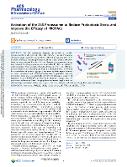Activation of the 26S Proteasome to Reduce Proteotoxic Stress and Improve the Efficacy of PROTACs

Datum vydání
2024Publikováno v
ACS Pharmacology & Translational ScienceRočník / Číslo vydání
8 (1)ISBN / ISSN
ISSN: 2575-9108ISBN / ISSN
eISSN: 2575-9108Informace o financování
MSM//LX22NPO5103
MSM//SVV260679
GA0/GA/GA22-16389S
UK/COOP/COOP
Metadata
Zobrazit celý záznamKolekce
Tato publikace má vydavatelskou verzi s DOI 10.1021/acsptsci.4c00408
Abstrakt
The 26S proteasome degrades the majority of cellular proteins and affects all aspects of cellular life. Therefore, the 26S proteasome abundance, proper assembly, and activity in different life contexts need to be precisely controlled. Impaired proteasome activity is considered a causative factor in several serious disorders. Recent advances in proteasome biology have revealed that the proteasome can be activated by different factors or small molecules. Thus, activated ubiquitin-dependent proteasome degradation has effects such as extending the lifespan in different models, preventing the accumulation of protein aggregates, and reducing their negative impact on cells. Increased 26S proteasome-mediated degradation reduces proteotoxic stress and can potentially improve the efficacy of engineered degraders, such as PROTACs, particularly in situations characterized by proteasome malfunction. Here, emerging ideas and recent insights into the pharmacological activation of the proteasome at the transcriptional and posttranslational levels are summarized.
Klíčová slova
proteasome, PROTAC, cAMP, cGMP, p38 MAPK, NFE2L1, NFE2L2, USP14
Trvalý odkaz
https://hdl.handle.net/20.500.14178/3081Licence
Licence pro užití plného textu výsledku: Creative Commons Uveďte původ 4.0 International







